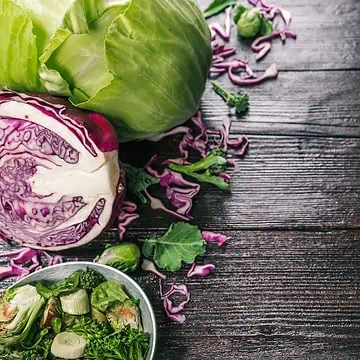Four of my absolute favourite Basil Varieties to try and fall in love with, this gorgeously aromatic herb epitomises summer and Italian cuisine

Who doesn't love fresh aromatic basil that is just so fresh and versatile, scatter it on top of your salads, blitz it into a pest, or add it to sauces and meals.
This Italian favourite is actually a native to India, where it has been cultivated for over 5,000 years! It came to Europe around the 16th century where it was used not only in cooking but in medicine as well.
Varieties
There are over 40 different types of basil to try but these are the ones that I just love to use in my salads:
- Flat Leaf Basil - This is the most popular variety and is also known as Large Leaf, Flat Leaf Genovese or Sweet Basil, it has large, wide, shiny, green leaves and a strong, sweet smell.
- Greek Basil - Greek basil has a spicy, lemony taste with an intense basil flavour. Just like your flat-leaf varieties but with a hint of lemon and oregano added. This is a hearty plant that I will use in cooking and in make-ahead salads as it holds up so well
- Purple Basil - Also called Opal Basil it is just so vibrant and adds bright colour to salads and cooking. It is wonderfully aromatic and spicy and I use it to add a pop of colour in my salads.
- Thai Basil - Also known as liquorice basil for the strong anise flavour it offers. It has a more robust flavour than sweet basil so can be cooked for longer periods of time without losing flavour.

Nutritional Information
- Basil is a good source of vitamin A (important for growth and development and the maintenance of your immune system).
- Basil boasts a high level of vitamin K, only 2 tablespoons of Basil fulfil 20% of the recommended daily intake (important for helping your blood to clot).
- It also contains minerals such as potassium (which helps to regulate blood pressure), manganese (involved in the regulation of brain and nerve function) and magnesium (involved in the regulation of muscle, heart and nerve function and keeping bones strong).
- Basil contains dietary fibre, which is important for a healthy bowel.
Selecting Basil
- Choose basil with fresh-looking leaves and stems. Avoid basil with yellow, black, wilted or damaged leaves.
- Basil is a delicate herb that bruises easily and spoils quickly mainly due to its high water content.
- I like to grow basil in a pot on my verandah and pick it as I need it and I have two different varieties growing. The delicate Italian flat-leaf basil with its delicate basil aroma and the much hardier Greek basil with its much stronger basil flavour. This ensures that I always have a supply on hand to use in my salads.

Storing Basil
There are two schools of thought on storing basil:
- The first method is trimming the stems – this helps them to take in water, then placing it in a glass of water and leaving it on your kitchen bench, not in your fridge as basil doesn’t like the cold. If you like you can cover it loosely with a plastic bag but it isn’t essential.
- The second method is by wrapping it in paper towels, then placing in a plastic bag and keeping it in the fridge.
To be honest, if I am going to buy basil I will do so a day or two before I plan on using it. If there is any leftover I will quickly blitz it into either a pesto or I will blitz it with some olive oil and sea salt, place into in a glass jar, cover it with olive oil and keep it in the fridge to stir through pasta, zoodles, use as a spread on sandwiches or even use it in a dressing or vinaigrette.
Preparation
- Wash your basil leaves and stems.
- Shake to remove excess water.
- Pat the basil leaves dry.
- Cut the small sprigs from the stem, great for a garnish.
- Either tear the leaves into smaller pieces, or
- Cut the larger leaves into a chiffonade.
To do this stack the leaves on top of each other, gently roll them into a cigar, and then use a sharp knife to slice them into thin ribbons.
Step by step instructions on how to cut chiffonade.





Leave a Reply